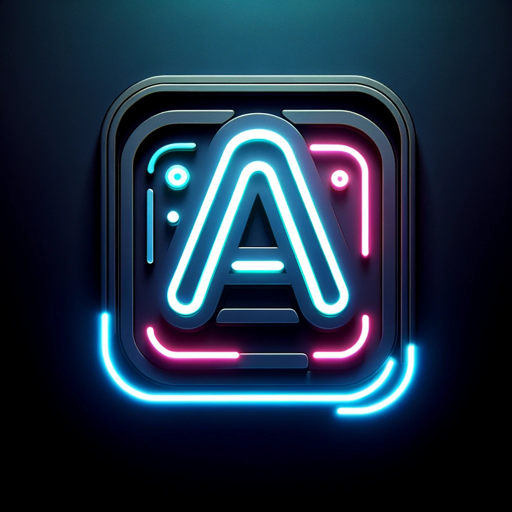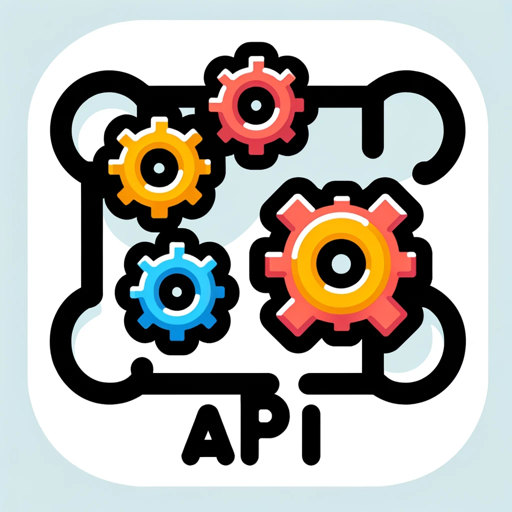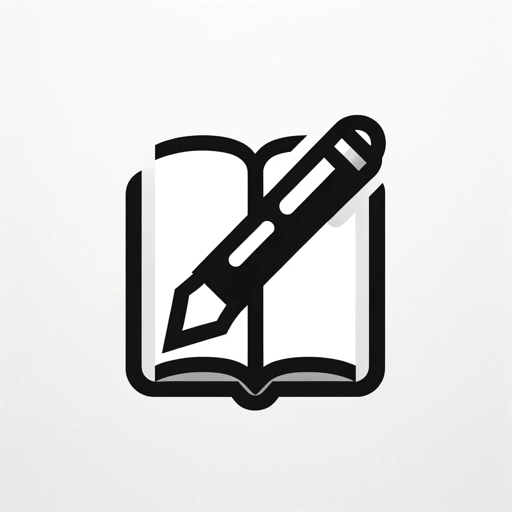OpenAPI Builder-API schema generation and design.
AI-powered API schema conversion.
Expert in converting APIs to OpenAPI Schemas, with a focus on education and best practices.
Convert this API to OpenAPI Schema:
Please fix these issues in my API schema:
How can I improve this API for OpenAPI compliance?
Guide me in structuring this API in OpenAPI format:
Related Tools

API Docs
OpenAI API, GPTs, Documentation and CookBook

GPT Builder 助手
转换 API 代码为 GPT Schema

App Builder
Builds simple web apps with OpenAI APIs for beginners.

API
An API expert, offering technical advice and examples.

Class Diagram Creator
I generate class diagrams from software concepts.

Custom GPT Creator
Creates custom GPT instructions and open ai system messages with precise syntax.
20.0 / 5 (200 votes)
Introduction to OpenAPI Builder
OpenAPI Builder is a specialized tool designed to help users convert raw API specifications, typically provided in formats like CURL, into structured OpenAPI schemas. The primary function of OpenAPI Builder is to streamline the process of API documentation by transforming complex API details into a compliant OpenAPI format. This tool not only automates the conversion but also educates users on best practices in API schema design, ensuring the resulting documentation is both accurate and efficient. By adhering to OpenAPI specification standards, the Builder ensures consistency and reliability in API documentation, making it easier for developers to understand, implement, and maintain APIs. A common scenario would involve a user providing a CURL request for an API, and OpenAPI Builder would then generate a corresponding OpenAPI schema that details the endpoints, request methods, parameters, and expected responses in a standardized format.

Main Functions of OpenAPI Builder
API Conversion
Example
A user provides a CURL command that includes an endpoint for fetching user data from a database. OpenAPI Builder converts this into an OpenAPI schema, detailing the GET request, the required parameters (e.g., user ID), and the expected JSON response structure.
Scenario
This function is essential for developers who have legacy APIs documented in an ad-hoc manner and need to migrate to an OpenAPI-compliant documentation process. It reduces manual effort and potential errors in creating comprehensive API documentation.
Schema Optimization and Best Practices
Example
When converting an API, OpenAPI Builder might suggest improvements, such as better parameter naming conventions or more efficient structuring of response objects, ensuring the schema is not only compliant but also optimized for readability and usability.
Scenario
This is particularly useful for teams that want to standardize their API documentation across various services, ensuring consistency and adherence to industry best practices.
Iterative Schema Development
Example
As API specifications evolve, OpenAPI Builder allows users to iteratively update and refine their OpenAPI schemas, ensuring that documentation stays up-to-date with minimal effort.
Scenario
In agile development environments where APIs are frequently updated, this function helps maintain accurate documentation that reflects the latest API changes, aiding in continuous integration and deployment processes.
Ideal Users of OpenAPI Builder
API Developers and Architects
These users benefit from OpenAPI Builder by streamlining the process of documenting and maintaining APIs. By automating the conversion of existing API calls into standardized schemas, developers save time and reduce the likelihood of errors, allowing them to focus more on developing new features and optimizing API performance.
Technical Writers and Documentation Teams
For those responsible for creating and maintaining technical documentation, OpenAPI Builder offers a reliable way to generate accurate, up-to-date API documentation. It helps ensure that the documentation is consistent with the actual API behavior, making it easier for end users and developers to understand and use the API effectively.

Guidelines for Using OpenAPI Builder
1
Visit aichatonline.org for a free trial without login, no need for ChatGPT Plus. This will give you immediate access to the OpenAPI Builder tool.
2
Prepare the API details you wish to convert, typically in CURL format. Ensure that you have access to all relevant endpoints, methods, request bodies, and response structures.
3
Input your API details into the OpenAPI Builder. The tool will analyze your input and generate a well-structured OpenAPI Schema. Be sure to review the generated schema for accuracy.
4
Modify or fine-tune the generated schema according to your specific needs. The tool allows for customization, ensuring that the schema meets your precise requirements.
5
Export the final OpenAPI Schema in your preferred format (.json or .yaml) for integration into your development process or documentation.
Try other advanced and practical GPTs
Article Writer
AI-driven articles tailored to your needs.

StudyGPT
AI-powered study support for smarter learning

Prompt Perfector
AI-powered tool for perfect prompts.

C# GPT
AI-powered assistance for C# developers.

Script
AI-Powered Writing and Optimization

Finance
Empower Your Finances with AI Insight

中道ネコ - saysay.ai
Balanced AI for Broadened Perspectives.

Academic Paper Writing Assistant
AI-powered clarity and precision for your academic writing.

Travel
AI-Powered Travel Planning Made Easy.

Writer
AI-Powered Tool for Writers

Books
Discover Your Next Favorite Book with AI

MindMap Maker
AI-powered tool for visualizing ideas

- Documentation
- Customization
- Compliance
- Schema Design
- API Conversion
Common Questions About OpenAPI Builder
What types of API formats does OpenAPI Builder support?
OpenAPI Builder primarily supports APIs provided in CURL format. It converts these into a structured OpenAPI Schema. For other formats, additional conversion steps may be required before inputting them into the tool.
Can I customize the generated OpenAPI Schema?
Yes, you can modify and fine-tune the generated OpenAPI Schema. The tool allows you to adjust endpoints, request methods, and response structures to match your specific API requirements.
Is there a cost to using OpenAPI Builder?
OpenAPI Builder offers a free trial at aichatonline.org, which does not require login or a ChatGPT Plus subscription. For extended usage or additional features, premium options may be available.
What are the common use cases for OpenAPI Builder?
OpenAPI Builder is commonly used for converting CURL-formatted APIs into structured schemas, optimizing API documentation, and ensuring compliance with OpenAPI standards. It's ideal for developers, technical writers, and API architects.
Does OpenAPI Builder provide guidance on best practices?
Yes, OpenAPI Builder not only converts APIs but also educates users on effective API schema design. It highlights best practices, common pitfalls, and offers tips for creating compliant and optimized OpenAPI Schemas.